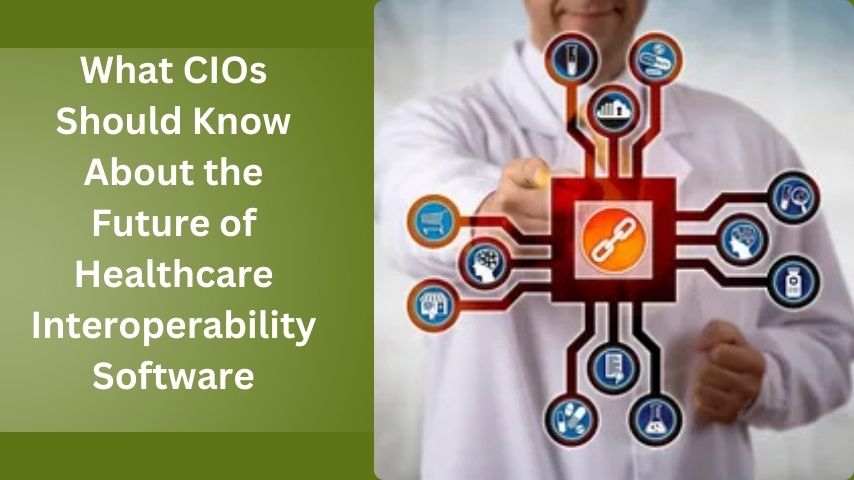
Healthcare interoperability software helps solve this problem by enabling real-time data exchange between hospitals, clinics, pharmacies, and other healthcare providers. It ensures that medical professionals have immediate access to accurate patient information when they need it the most.
Let’s take a closer look at how healthcare interoperability software improves real-time data exchange and why it is essential for modern healthcare systems.
NOTE: If you are looking for a way to improve data sharing in your healthcare system, healthcare interoperability software is the solution. It ensures instant access to patient information, enhances coordination between providers, and makes healthcare more efficient. Now is the time to integrate this technology and take patient care to the next level!
Why Real-Time Data Exchange is Important in Healthcare
Doctors, nurses, and other medical professionals rely on up-to-date patient data to make informed decisions. Without real-time data exchange, they face challenges such as:
- Delayed diagnoses and treatments – Waiting for lab results or past medical records can slow down critical treatment decisions.
- Errors in medication and treatment plans – If a doctor does not have access to a patient’s complete history, there is a risk of prescribing incorrect medication.
- Difficulty in emergency care – In emergencies, every second counts. Quick access to patient records can save lives.
- Frustration for patients – Patients often have to repeat the same information when visiting different healthcare providers, leading to unnecessary delays.
Healthcare interoperability software addresses these issues by ensuring that patient data is shared and updated in real-time across different systems.
How Healthcare Interoperability Software Improves Real-Time Data Exchange
1. Instant Access to Patient Records
In traditional healthcare systems, patient records are often stored in separate databases. A hospital may have its own record system, while a pharmacy or laboratory may use a different one. Healthcare interoperability software connects these systems, allowing medical professionals to access patient data instantly from a single platform.
For example, if a patient visits an emergency room, doctors can quickly pull up their medical history, allergies, and past treatments. This speeds up diagnosis and ensures that the right treatment is provided.
2. Faster Communication Between Healthcare Providers
Many treatments involve multiple healthcare professionals, such as doctors, specialists, lab technicians, and pharmacists. Healthcare interoperability software ensures that all these professionals have real-time access to the latest patient data.
For instance, when a doctor prescribes a new medication, the prescription is instantly updated in the system. The pharmacist can then access it without needing a fax or phone confirmation. This reduces wait times and minimizes prescription errors.
3. Real-Time Monitoring of Patient Health
With the rise of wearable health devices and remote monitoring tools, healthcare interoperability software plays a crucial role in real-time patient care. These devices collect data such as heart rate, blood pressure, and glucose levels and transmit it instantly to healthcare providers.
Doctors can monitor patients remotely and receive alerts if there are any abnormalities. This is especially useful for managing chronic conditions like diabetes and heart disease, where continuous monitoring can prevent serious complications.
4. Reducing Medical Errors and Duplicated Tests
One of the biggest problems in healthcare is duplicated tests and medical errors due to missing or outdated information. Healthcare interoperability software ensures that all patient records are updated in real-time, preventing unnecessary tests and reducing errors.
For example, if a patient has already had a blood test done at one clinic, the results are immediately available to specialists at another hospital. This prevents the need for repeating the test, saving both time and costs.
5. Supporting Telemedicine and Virtual Consultations
Telemedicine is becoming more popular, allowing patients to consult doctors online. Healthcare interoperability software ensures that during a virtual appointment, doctors have real-time access to the patient’s medical history, test results, and medication records.
Without interoperability, telemedicine visits would be inefficient, as doctors would have to rely on patients to recall their medical details. Real-time data exchange makes telemedicine more effective and improves the quality of remote care.
Challenges in Implementing Healthcare Interoperability Software
While healthcare interoperability software brings many benefits, there are also challenges that healthcare organizations need to address:
- Data Security and Privacy – Since patient data is sensitive, strong security measures must be in place to protect it from cyber threats.
- Different Data Formats – Not all healthcare systems use the same data format, making integration difficult.
- Cost of Implementation – Upgrading existing healthcare IT systems to support interoperability can be expensive for some providers.
Despite these challenges, the need for real-time data exchange is driving healthcare organizations to adopt healthcare interoperability software as a long-term solution.
The Future of Healthcare with Interoperability Software
As healthcare continues to embrace digital transformation, healthcare interoperability software will play an even bigger role in shaping the future. Some key developments include:
- AI-Powered Decision Support – Artificial intelligence can analyze patient data in real-time and provide doctors with treatment recommendations.
- Blockchain for Secure Data Exchange – Blockchain technology can make patient data more secure and prevent unauthorized access.
- Faster Emergency Response Systems – Paramedics and emergency teams will have instant access to critical patient records, improving emergency care.
Healthcare providers that invest in healthcare interoperability software today will be better prepared to offer faster, safer, and more efficient patient care in the future.
Conclusion
Real-time data exchange is crucial for modern healthcare, and healthcare interoperability software is making it possible. By connecting different systems, reducing errors, and improving communication, this technology is helping doctors, nurses, and medical professionals provide better care. While challenges exist, the benefits of adopting healthcare interoperability software far outweigh the obstacles.
For more insightful articles related to this topic, feel free to visit trendburst




Leave a Reply